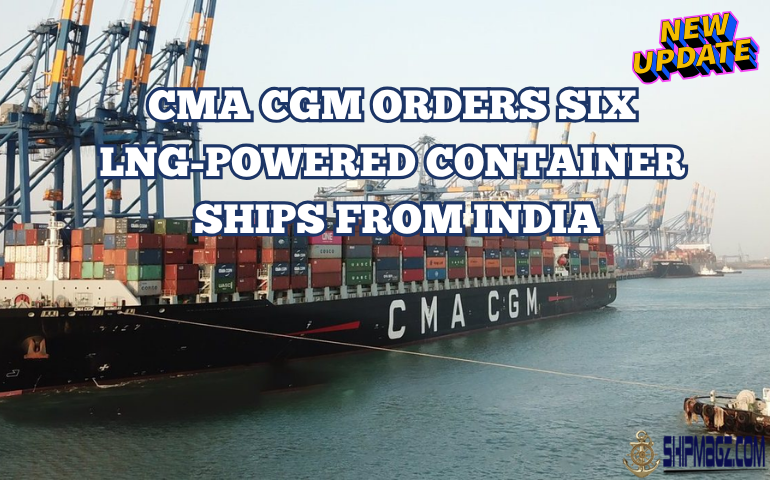CMA CGM Orders Six LNG-Powered Container Ships from India

These vessels will use liquefied natural gas (LNG) as fuel, reducing emissions and improving environmental performance.
The contract marks a strategic shift toward greener shipping within CMA CGM’s fleet.
Construction in India signifies growing capabilities in the Indian shipbuilding sector.
Such ships help the operator comply with stricter emission regulations globally.
Background & Significance
CMA CGM — a leading global shipping company — has commissioned six LNG-powered container ships from Cochin Shipyard, India. This is the first time an international liner has ordered LNG dual-fuel container vessels built in India, marking a milestone in both CMA CGM’s green agenda and the Indian shipbuilding industry.
Technical & Environmental Benefits
The vessels are designed to operate on LNG, a cleaner-burning fuel compared to conventional marine fuels. This reduces emissions of sulfur oxides (SOₓ), nitrogen oxides (NOₓ), and particulates, helping the shipping operator meet tougher environmental regulations. These dual-fuel engines also provide flexibility to switch between LNG and conventional fuel as needed.
Strategic Implications for Shipyards & Shipping
For Cochin Shipyard, securing this order reinforces its credentials in building advanced, environmentally-friendly vessels. It signals growing competitiveness of Indian shipbuilders in the global market. For CMA CGM, it underscores their commitment to sustainability and decarbonization strategies.
Regulatory & Market Drivers
Global maritime regulations — including IMO’s Emissions standards — are pushing operators toward cleaner technologies. LNG is viewed as a key transitional fuel. Such orders help shipowners stay ahead of regulation and market expectations for greener operations.
Implementation & Future Outlook
Construction timelines, delivery schedules, and routes for these vessels remain to be confirmed. Once operational, these ships may be deployed in major trade lanes to maximize environmental gains. The trend may encourage further LNG vessel orders globally, especially from regions with growing shipbuilding capacity.










